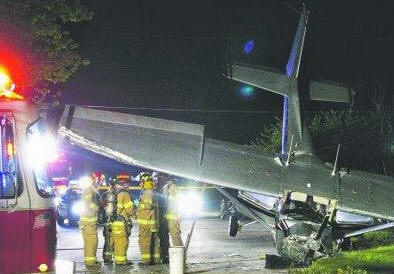

Prepared for Anything
by Roger Storey
|
As the popularity of aviation as a career and as a hobby increases, so does the concern for safety. One such concern is survival after a crash. As a Survival Instructor with the Civil Aeromedical Institute's Airman Education Division, I am often asked, "What is the most important piece of equipment to have in a survival situation?" The answer is simple: You. In any survival situation, there are specific priorities, such as medical first-aid, shelter from the elements, rest, water, and signaling. The order of importance you place on each these priorities will be dictated by each situation. For instance, the priorities for a pilot forced into a survival situation in rural Missouri during August will vary from a pilot who has to survive in Northern Michigan during January. One thing is for certain, without a "will to survive," there can be no survival. If you do not have a desire to survive, there is no equipment made that will help you survive. There are two simple, but important, ways you can increase your chances of survival. These involve preparation - before you ever find yourself in an actual survival situation. |
 |
The first is to admit to yourself that "It Can Happen To Me." The next step is to prepare yourself, both mentally and physically. The mental preparation can come in the form of educational courses, books, or conversations. There are all kinds of survival courses conducted around the United States that deal specifically with the climate, terrain, and many other factors to which you may be exposed in each region. Along with these courses, there are a great number of books on survival techniques for the desert, arctic, and sea, etc.. You can find these at most bookstores or at the library. Another way to gain knowledge is to ask people who have been through a survival situation what to expect. Training also includes learning how to use, or just practicing, the use of survival gear you may already have.
However, it is not enough to be mentally prepared if you cannot withstand the physical requirements of a survival situation. Preparing yourself, physically, for a survival situation depends greatly on the shape you are in now. Keep in mind that your situation may require you to walk, climb, or even carry a fellow crew member or passenger a distance. You will want to be as physically fit as you would expect the person, who might have to carry you, to be.
By improving your knowledge and physical capabilities, you will also increase your confidence, which will benefit you a great deal. The more informed you are about your own capabilities and on the climate and terrain over which you fly, the easier it will be to decide what your priorities for survival will be. The priorities of survival will vary from situation to situation and region to region. Using the priorities established earlier you can start to evaluate what equipment would be best suited for your personal survival kit(PSK).
PRIORITY CHECKLIST PURPOSE
MEDICAL
SHELTER
REST
SURVIVAL
WATER
FOOD
|
MEDICAL |
SHELTER |
WATER |
|
First aid kit |
Poncho |
Water purification |
|
Personally prescribed |
Matches |
tablets |
|
Medication |
Fire Starting |
Canteen |
|
Aspirin |
Material |
Plastic water bottle |
|
MISCELLANEOUS |
SIGNALING |
FOOD |
|
Quality Pocket knife |
Flares |
Granola bars |
|
Compass |
Whistle |
MREs |
|
Mirror |
Fishing kit |
|
SIGNALING RESCUE
Once you have decided what your needs are in accordance to your priorities and typical flying area you can decide what equipment will best suit your needs. Below is a basic list of suggested equipment you might consider for your PSK. Keep in mind a PSK is a survival kit that is designed to supplement your survival needs but must be readily and easily accessible in the event of an emergency evacuation from the aircraft.
| ŠAvStop Online Magazine Contact Us Return Home |